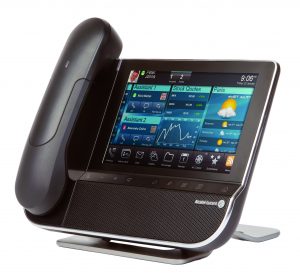

The analog telephone network has been around for almost 140 years. It has played a major role in communications, both voice and data, as the following infographic by small business telecom research firm Software Advice shows
As of 2020, it is projected that US carriers will no longer have to maintain analog phone networks. In some states, as early as Jan 1, 2017, this legislation will take effect. As of 2030, the last remaining analog telephone line service is planned to be cancelled.
For your business, this means:
You May Need A New Small Business Phone System
Analog POTS (Plain Old Telephone Service) lines, PRI (Primary Rate Interface), T1, ISDN are all analog connections. These will need to be replaced by a SIP (Session Initiation Protocol) connection, which is a protocol that allows for your phones or phone system to route voice over the Internet, VoIP.
If your phone system does not support SIP, you will need a new system. Hosted PBX, hosted voice or cloud PBX, which are some of the names it’s commonly called, is where the phone system is hosted in the cloud or data center and the end-user phones connect over the Internet to the remote phone system. There is very little, if any, hardware in the office.
Faxing Will Convert to IP or Die
Today, faxing relies heavily on the analog network. Fax over Internet (FoIP) is where the analog connection is converted to digital, IP, and routed over the Internet. It has proven to be very unreliable in most cases, except where there are no network latency issues or packet loss.
The long term solution is to eliminate the fax machine altogether, if possible, by using a scanner, email, drop-box or other digital document transmission.
Credit Card Processing, Emergency Phones and Alarm Lines Will Change
Since credit card transactions, alarm lines and emergency phones, such as elevator phones, are all dependant on analog connections, they will need to convert to an IP connection. Credit card machines will need to be replaced with ones that communicate over the Internet.
